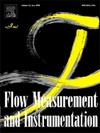SLowFlowS: A novel flow standard for semiconductor process gases
IF 2.3
3区 工程技术
Q2 ENGINEERING, MECHANICAL
引用次数: 0
Abstract
Numerous process gases are used in the production of semiconductor chips. Accurate metering of these gases into process chambers is critical for maximizing device throughput and yield. A national flow standard for semiconductor process gases does not exist, forcing the industry to rely on approximate “meter factors” to extrapolate a meter calibration carried out with nitrogen to the actual process gas. To address this issue, the National Institute of Standards and Technology (NIST) developed a novel rate-of-rise flow standard featuring long, slender tubing for the collection tank geometry. This design, paired with an air bath for thermal stability, ensures efficient heat transfer and accurate temperature prediction during the filling process. This standard will enable modeling the species effects of commercial flow meters and controllers. These models will enable a meter calibrated with nitrogen to provide accurate measurements of hazardous semiconductor process gases. We describe the design, experimental validation of the thermodynamic model, tests of the new flow standard, and uncertainty analysis. The standard is called SLowFlowS (Semiconductor Low Flow Standard), and it has an expanded uncertainty (95 % confidence level) between 0.056 % and 0.098 % of the flow and covers a flow range of 0.01 cm³/min to 1000 cm³/min at the standard conditions of 273.15 K and 101.325 kPa.
SLowFlowS:半导体工艺气体的新型流动标准
在半导体芯片的生产中使用了大量的工艺气体。这些气体进入工艺室的精确计量是最大限度地提高设备吞吐量和产量的关键。半导体工艺气体的国家流量标准不存在,迫使行业依靠近似的“仪表因素”来推断用氮气对实际工艺气体进行的仪表校准。为了解决这一问题,美国国家标准与技术研究院(NIST)开发了一种新型的流量上升标准,该标准采用了细长的油管,用于收集罐的几何形状。这种设计与热稳定性的空气浴相结合,确保了在灌装过程中有效的传热和准确的温度预测。该标准将使商业流量计和控制器的物种效应建模成为可能。这些模型将使用氮气校准的仪表能够提供危险半导体工艺气体的精确测量。我们描述了热力学模型的设计、实验验证、新流动标准的测试和不确定度分析。该标准名为SLowFlowS(半导体低流量标准),在273.15 K和101.325 kPa的标准条件下,该标准的不确定度(95%置信水平)在0.056% ~ 0.098%之间,流量范围为0.01 cm³/min ~ 1000 cm³/min。
本文章由计算机程序翻译,如有差异,请以英文原文为准。
求助全文
约1分钟内获得全文
求助全文
来源期刊

Flow Measurement and Instrumentation
工程技术-工程:机械
CiteScore
4.30
自引率
13.60%
发文量
123
审稿时长
6 months
期刊介绍:
Flow Measurement and Instrumentation is dedicated to disseminating the latest research results on all aspects of flow measurement, in both closed conduits and open channels. The design of flow measurement systems involves a wide variety of multidisciplinary activities including modelling the flow sensor, the fluid flow and the sensor/fluid interactions through the use of computation techniques; the development of advanced transducer systems and their associated signal processing and the laboratory and field assessment of the overall system under ideal and disturbed conditions.
FMI is the essential forum for critical information exchange, and contributions are particularly encouraged in the following areas of interest:
Modelling: the application of mathematical and computational modelling to the interaction of fluid dynamics with flowmeters, including flowmeter behaviour, improved flowmeter design and installation problems. Application of CAD/CAE techniques to flowmeter modelling are eligible.
Design and development: the detailed design of the flowmeter head and/or signal processing aspects of novel flowmeters. Emphasis is given to papers identifying new sensor configurations, multisensor flow measurement systems, non-intrusive flow metering techniques and the application of microelectronic techniques in smart or intelligent systems.
Calibration techniques: including descriptions of new or existing calibration facilities and techniques, calibration data from different flowmeter types, and calibration intercomparison data from different laboratories.
Installation effect data: dealing with the effects of non-ideal flow conditions on flowmeters. Papers combining a theoretical understanding of flowmeter behaviour with experimental work are particularly welcome.
 求助内容:
求助内容: 应助结果提醒方式:
应助结果提醒方式:


